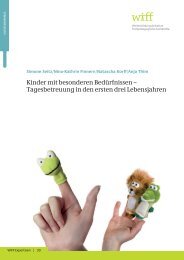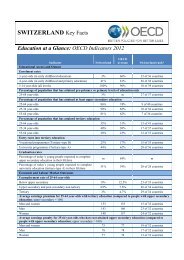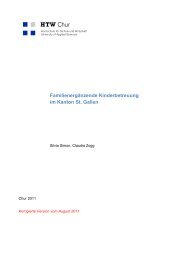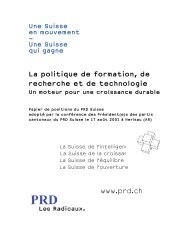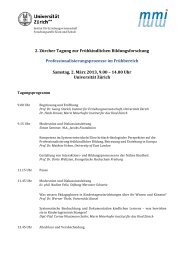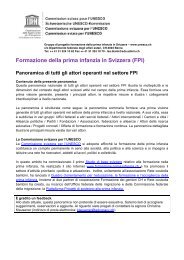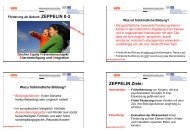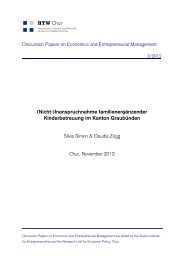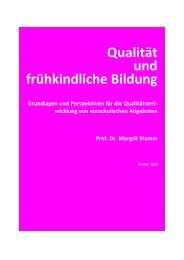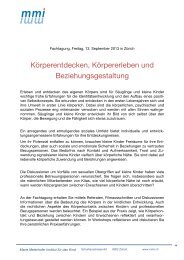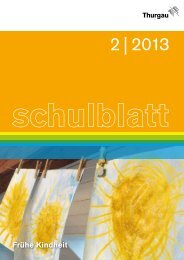la poupée de timothée et le camion de lison - Le deuxième ...
la poupée de timothée et le camion de lison - Le deuxième ...
la poupée de timothée et le camion de lison - Le deuxième ...
Create successful ePaper yourself
Turn your PDF publications into a flip-book with our unique Google optimized e-Paper software.
Interactions professionnel-<strong>le</strong>-s – parents : codifiez <strong>le</strong> type d’interactions selon <strong>le</strong>s codifications<br />
suivantes, <strong>et</strong> spécifiez <strong>le</strong> sexe <strong>de</strong>s professionnel-<strong>le</strong>-s <strong>et</strong> <strong>de</strong>s parents (M pour<br />
mère <strong>et</strong> P pour père) :<br />
- L’adulte transm<strong>et</strong> <strong>de</strong>s informations au(x) parent(s) TRA<br />
- L’adulte a <strong>de</strong>s échanges avec <strong>le</strong>s parents à propos <strong>de</strong> l’enfant ECH<br />
- L’adulte a une discussion, au-<strong>de</strong>là du domaine professionnel, avec <strong>le</strong>s parents DIS<br />
Exemp<strong>le</strong> : « L’éducatrice dit aux parents <strong>de</strong> Fabien qu’il a fait une bonne sieste » F TRA M+P<br />
Interactions enfants – enfants : codifiez <strong>le</strong> type d’interactions selon <strong>le</strong>s co<strong>de</strong>s suivants<br />
<strong>et</strong> indiquez <strong>le</strong> sexe <strong>de</strong>s enfants:<br />
- L’enfant s’impose dans l’espace ou dans <strong>le</strong> jeu <strong>de</strong> l’autre (intrusion) IMP<br />
- L’enfant occupe <strong>de</strong> façon physique <strong>et</strong> sonore l’espace OCC<br />
- L’enfant « agresse physiquement » un autre enfant (pousser, taper, tirer <strong>le</strong>s cheveux,<br />
mordre, <strong>et</strong>c.) AGRP<br />
- L’enfant « agresse verba<strong>le</strong>ment » un autre enfant AGRV<br />
- L’enfant donne un ordre à un autre enfant ORD<br />
- L’enfant se p<strong>la</strong>int <strong>de</strong> l’attitu<strong>de</strong> d’un autre enfant PLA<br />
- <strong>Le</strong>s enfants jouent ensemb<strong>le</strong> JOUE<br />
- L’enfant joue seul-e JOUS<br />
- <strong>Le</strong>s enfants par<strong>le</strong>nt entre eux PAR<br />
- <strong>Le</strong>s enfants se m<strong>et</strong>tent d’accord entre eux DAC<br />
Exemp<strong>le</strong> : « Marin<strong>et</strong>te, Eléonore <strong>et</strong> Louis jouent au train » 2f+g JOUE<br />
Exemp<strong>le</strong> : « Marc pénètre dans <strong>le</strong> coin <strong>poupée</strong>s, où jouent La<strong>et</strong>itia <strong>et</strong> Louise, <strong>et</strong> j<strong>et</strong>te <strong>le</strong>s<br />
habits par terre » g IMP 2f<br />
Remarques : notez tout ce que vous n’avez pas pu faire apparaître sur <strong>la</strong> gril<strong>le</strong> <strong>et</strong> / ou vos<br />
impressions<br />
Rappel <strong>de</strong>s codifications par ordre alphabétique :<br />
AGRP : L’enfant « agresse physiquement » un autre enfant (pousser, taper,<br />
tirer <strong>le</strong>s cheveux, mordre, <strong>et</strong>c.)<br />
AGRV : L’enfant « agresse verba<strong>le</strong>ment » un autre enfant<br />
AID : L’adulte ai<strong>de</strong> l’enfant<br />
COM : L’adulte complimente l’enfant<br />
DAC : <strong>Le</strong>s enfants se m<strong>et</strong>tent d’accord entre eux<br />
DEM : L’enfant <strong>de</strong>man<strong>de</strong> <strong>de</strong> l’ai<strong>de</strong> à l’adulte<br />
DIS : L’adulte <strong>et</strong> <strong>le</strong>(s) parent(s) ont une discussion plus longue (privée)<br />
ECH : L’adulte <strong>et</strong> <strong>le</strong>(s) parent(s) échangent sur l’enfant<br />
ENC : L’adulte encourage l’enfant<br />
FEL : L’adulte félicite l’enfant<br />
GUI : L’adulte gui<strong>de</strong> l’enfant<br />
INT : L’adulte intervient dans l’action <strong>de</strong> l’enfant ou <strong>de</strong>s enfants<br />
IMP : L’enfant s’impose dans l’espace ou dans <strong>le</strong> jeu <strong>de</strong> l’autre (intrusion)<br />
JOUE : <strong>Le</strong>s enfants jouent ensemb<strong>le</strong><br />
JOUS : L’enfant joue seul-e<br />
OCC : L’enfant occupe <strong>de</strong> façon physique <strong>et</strong> sonore l’espace<br />
ORD : L’enfant donne un ordre à un autre enfant<br />
PAR : L’enfant prend spontanément <strong>la</strong> paro<strong>le</strong> ou <strong>le</strong>s enfants par<strong>le</strong>nt entre eux<br />
PLA : L’enfant se p<strong>la</strong>int <strong>de</strong> l’attitu<strong>de</strong> d’un autre enfant<br />
REM : L’adulte rem<strong>et</strong> à l’ordre l’enfant<br />
REP : L’enfant répond à l’adulte ou l’adulte répond à l’enfant<br />
SOLD : L’adulte s’adresse directement à l’enfant (sollicitation directe)<br />
SOLC : L’adulte s’adresse au groupe d’enfants (sollicitation à <strong>la</strong> cantona<strong>de</strong>)<br />
TRA : L’adulte transm<strong>et</strong> <strong>de</strong>s informations au(x) parent(s)<br />
2ème partie : l’observation quantitative<br />
chapitre 5<br />
47 www.2e-observatoire.com



